On the third largest island in the world, deep in the rainforest of Tanjung Puting park, I float with family and friends down the Sekonyer river on two klotoks, three-tier wooden boats. The river is coffee dark yet reflects the feathery fingers of nipa palms bordering the banks. We came to see orangutans in their natural habitat, but instead I felt a shadow stretching across the river, like the hand of King Kong reaching out to crush a fragile ecosystem.
Synthetic Spring
As soon as our kids saw the boats, with stairs and passage ways, they jumped from the dock, hopped over the railing and explored the lower bowels and upper balcony. My friend, Amita, with the instincts of a mom, began opening cupboards—no pots or blankets here, instead books on tropical birds and orangutans. She stretched her hand over the railing, “Sweetheart, I think you will like this one.” I opened The Silent Spring, by Rachel Carson. The first chapter was an eerie description of a town in America drained of life by an arsenal of poisons and pesticides: “On the morning that had once throbbed with the chorus …of bird voices there was no sound; only silence lay over the wood marsh.”
In contrast to this futuristic town in America, the town of Pangkalan Bun on the edge of the park was permeated by a crackly cacophony of bird chirps. And instead of marshes, the shadows of tall concrete buildings— dotted with holes like a pegboard—leered like predators over the fishing shacks and riverboats. As we settled our luggage into the boat, I asked our guide Aris Ramazon why these buildings had no windows.
”They’re birdhouses. Edible Swiftlets build their nests with their saliva, and these are a delicacy in China. Each nest is worth at least one thousand US dollars.”
“What! Then shouldn’t this town be a bit more glamorous?” my daughter asked, noting the mounds of tires and corrugated tin strewn on the shore.
He shrugged, ”Chinese Investors buy the land.” Pointing to the speakers at the tops of the buildings, he explained that they played bird noises to attract the swiftlets to brood in these holes. This town was no silent spring—it was a synthetic spring.
The Chains of Life
Our boat plied down the river, past the bird houses and fishing shacks, and turned left into the Sekonyer. On one side of the river is a 200,000 acre palm oil plantation on the other side an orangutan habitat. The humidity pins my body to a bean bag like a swatted mosquito. Meanwhile, my head is heavy, from reading the Silent Spring. Each fact sinks into the pit of my stomach like river sludge. “Water must be thought of in terms of the chains of life it supports. Can we suppose that poisons we introduce into water will not also enter into the cycles of nature?” Despite the pesticide runoff from the plantations, this rainforest is defiant—fertile, green and flush with life. Aris points out a dash of blue–a KingFisher; a flit of white–a storm crane; and the shaking of trees—a harem of proboscis monkeys.
I thought Borneo was just an exotic page from the National Geographic magazines I had read as a kid, but little did I know my connection to this land was as intimate as laced lingerie. Palm oil produced from these plantations is an ingredient in almost every product I use or eat from lip gloss to lotion, pizza to pretzels. An estimated fifty percent of all packaged food, cosmetics and household products in the United States have palm oil as an ingredient. But palm oil is not just on the supermarket shelves. In 2007, when I was a new teacher drowning in papers to grade, I missed President George Bush's State of the Union address where he promised to reduce carbon emissions in the United States by increasing the use of biofuels from crops. He received a standing ovation. But, as a result of the increase in demand, at least fifteen million acres of Bornean rainforests have been burned to stubs and converted to plantations, shrinking the habitat for orangutans, displacing native villages, and leaching pesticides into the groundwater. Ironically, instead of reducing carbon emissions, deforestation increased them. This river we floated on was a dark brown from the peat deposits in the water. These peat rich soils trapped “12 times more carbon than other rainforests” and once cleared they “can spew carbon into the air for decades.” As a result, Indonesia is now the sixth largest producer of carbon emissions. Sixty years ago, Rachel Carson called into question an “era dominated by industry, in which the right to make a dollar at whatever cost was seldom unchallenged” and ignited the environmental revolution. But have we changed?
The Forest Sages
In the afternoon we arrived at Camp Leakey, an orangutan research station. Macaques sat on tree branches waiting for us to leave our boats. Amita, in a flowing tie-dye dress, swung onto the dock. “Good afternoon, sweetheart.” As we walked on the creaking boardwalk over the marsh, I ranted about pesticides and the environment. Dragon flies dithered and darted through palm fronds. Amita turned to me, “Dear, we can’t stop the industrial revolution, but we can be part of the evolution of consciousness.” Her words fluttered like effervescent wings, elusive yet hopeful. “By healing ourselves, we can raise the collective vibration.” I wanted to capture this thought in my palms and parse it into units and steps. Does the evolution of consciousness first begin with the awareness of our own consciousness? Is consciousness the life force that animates not only humans but plants and animals too? If so, how does one raise their vibration? Carson wrote, “The more clearly we can focus our attention on the wonders and realities of the universe about us, the less taste we will have for destruction.” I stopped and listened. The treetops swooshed as an orangutan propelled herself from one thin branch to the next, until she arrived at her waiting spot. As a ranger spread yams and bananas on the feeding platform, I marveled at the orangutan’s ability to balance on a slender branch and sit, like a forest sage waiting for answers.
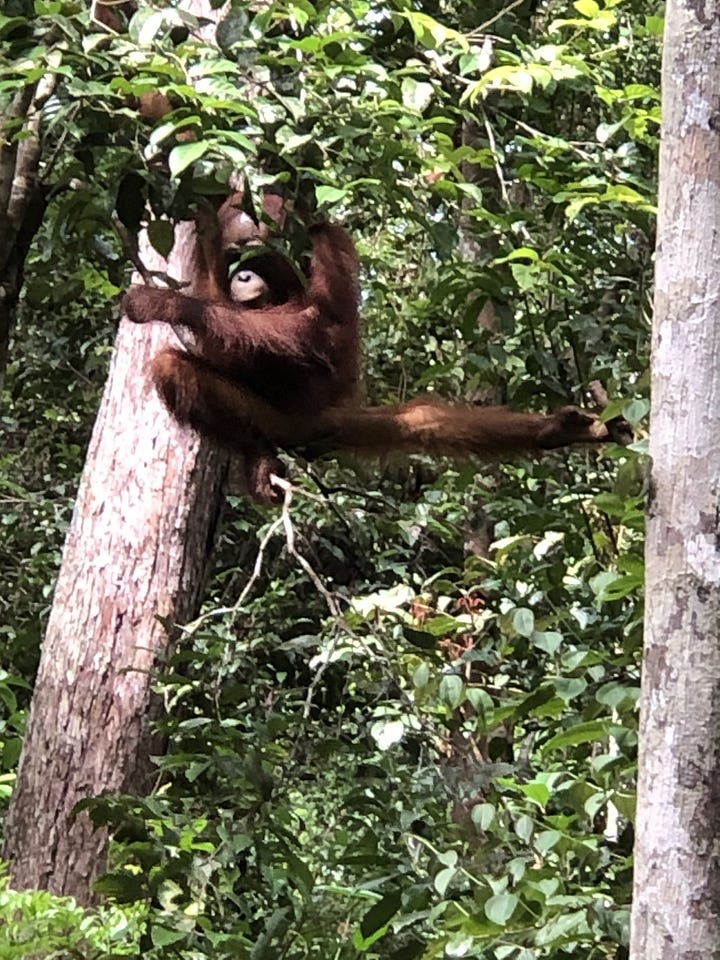
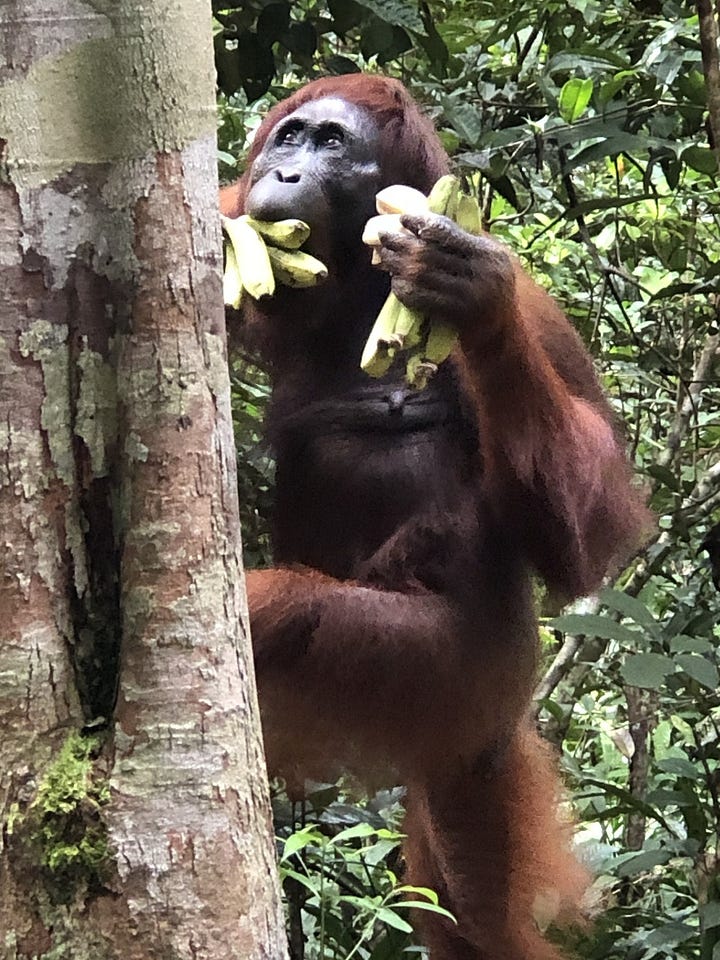
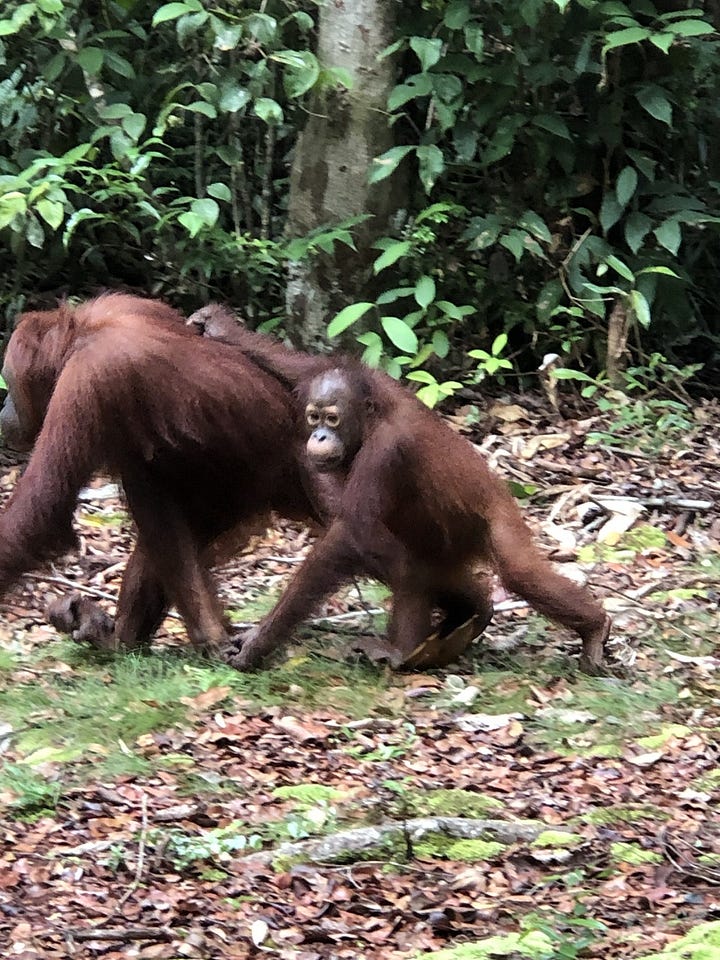
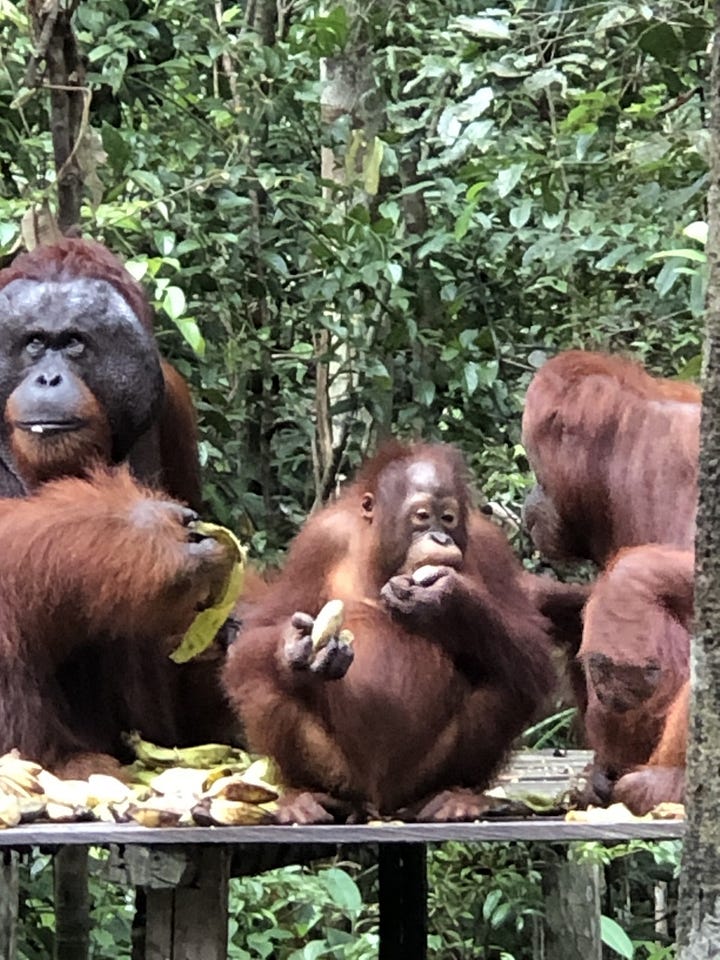
https://www.nytimes.com/2018/11/20/magazine/palm-oil-borneo-climate-catastrophe.html
https://wwfcee.org/partnerships/partnership-for-sustainable-food/7-things-to-know-about-palm-oil
Carson, Rachel. The Silent Spring, 1962.

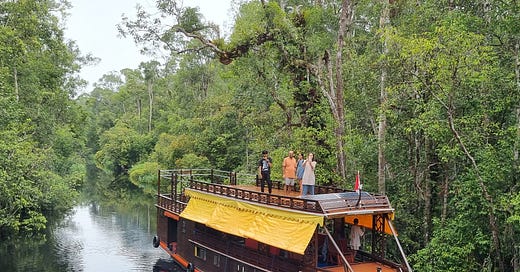



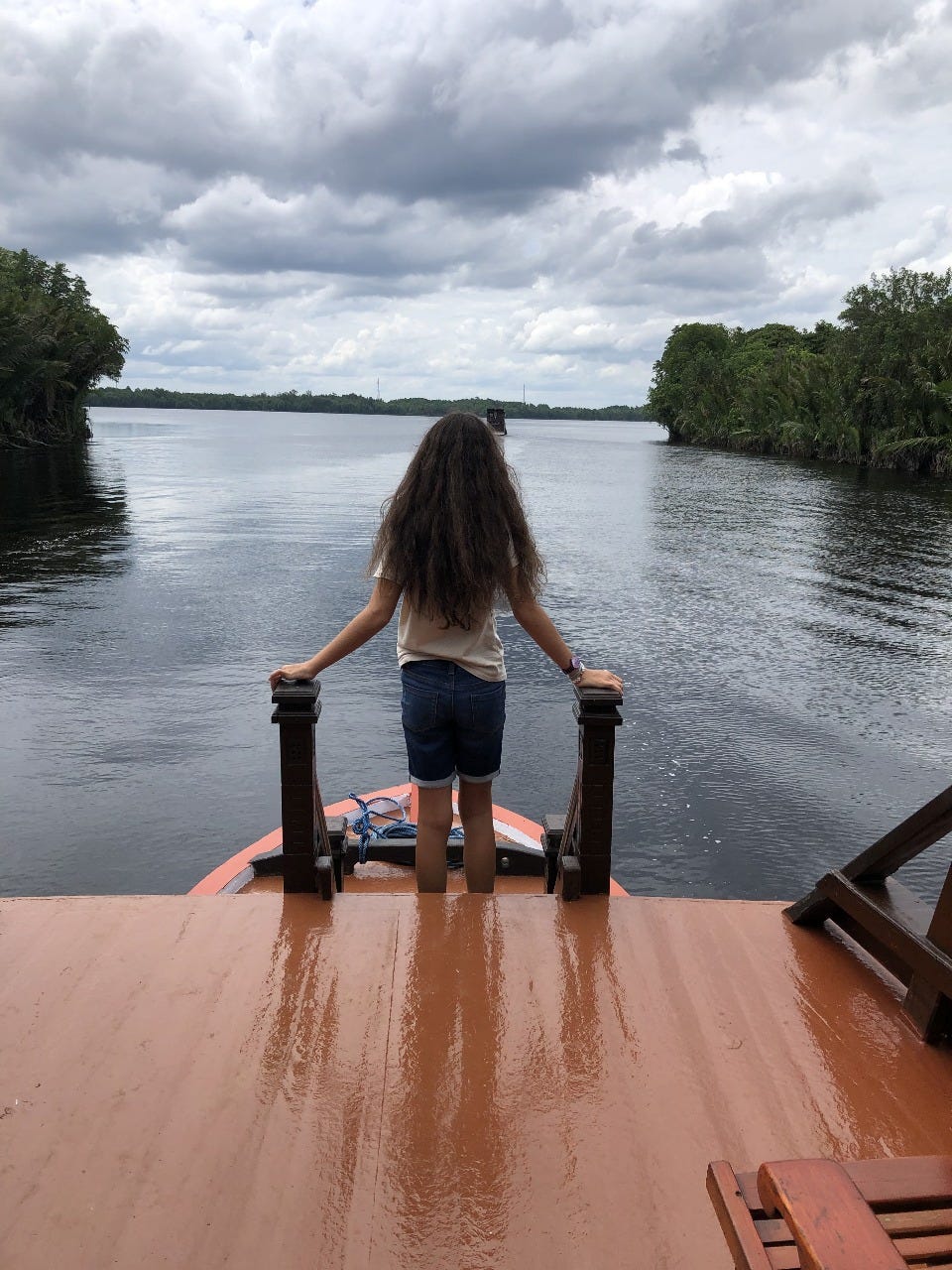
Beautiful story, Krishna. Thank you.
Beautiful pics and imagery - thank you for sharing. Hoping to be part of this evolution of consciousness that our earth so dearly needs!